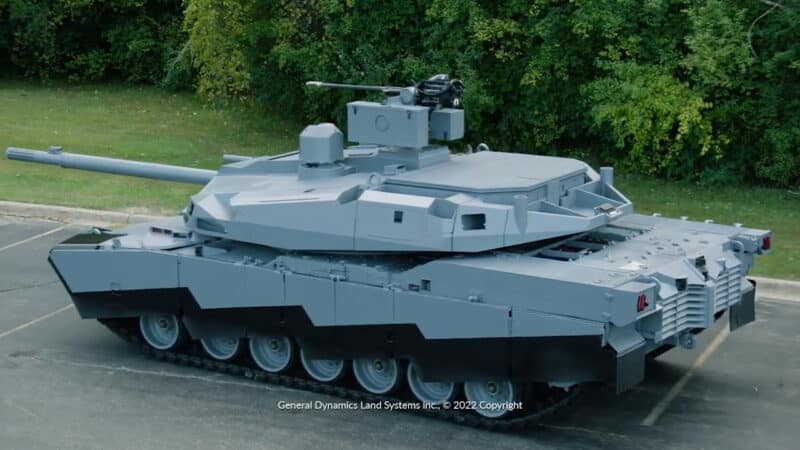On the occasion of the AUSA exhibition which will take place from October 10 to 12 in the suburbs of Washington, the armored vehicle manufacturer General Dynamics Land Systems, formerly Chrysler and designer of the famous Abrams combat tank and the Stryker armored vehicle, will present a new generation of armored vehicles based on hybrid electric propulsion and the integration of the latest technological advances in this field such as Hard-Kill systems and new generation visualization/command/communication systems. Among them is the StrykerX, a redesign of the 8×8 under-armoured personnel carrier equipped with all of these technologies, as well as the AbramsX, an in-depth reboot of the American tank, the main characteristics of which we have already discussed in a previous article. As the show begins, it seems that GDLS' strategy increasingly mirrors that of Rheinmetall around the KF-51 Panther, since the AbramsX will not be presented in the form of a model, but of a functional tank halfway between the technological demonstrator and the prototype, so as to offer the US Army a potential solution in a relatively short time term and lower costs to modernize its fleet of combat tanks.
Obviously, GDLS intends not to leave it to other players, such as the South Korean Hyundai Rotem with the K2 Black Panther, but especially the German Rheinmetall with the KF-51 Panther, the opportunity to establish itself on the world market, and especially on the national market, due to a lack of alternative on the part of American manufacturers. Indeed, the US Army has shown in the past its ability to turn to a European or even Asian supplier to meet needs that its industry was not able to produce, or within deadlines and at too high costs. . In this sense, the AbramsX is indeed a response to the Panther German, even if it relies on certain more advanced technologies than the German tank, particularly in terms of propulsion. The fact remains that after the Russian T-14 Armata presented in 2015 and which seems to have taken discreet first operational steps in Ukraine, the Panther and the AbramsX indeed seem to give new impetus in terms of modernization and extensions of operational capabilities of heavy tanks, with an objective of availability before the end of this decade. In this context, the Franco-German MGCS new generation battle tank program, which is not scheduled to enter service before 2035, may appear to be behind schedule compared to competing models, as much as the K2 Black Panther South Korean, more conventional but immediately available, could very well attract many players seeking quickly available solutions. As is often the case, many factors influence such an issue, and knowing whether it is necessary and relevant to accelerate the MGCS program is much more complex than perceived at first glance.

The main argument in favor of accelerating the MGCS program is none other than the significant short and medium term needs of the French and German armies in terms of tanks and heavy armored vehicles. In fact, the French armies will field, in the years to come, only 200 Leclerc tanks, 270 at best if all the tanks in the fleet that could be modernized were actually modernized. The same is true across the Rhine, while the Bundeswehr only plans to field 356 Leopard 2 by the time the MGCS comes into service. However, French industry no longer has, today, the capacity to produce new Leclercs, and the German industrial capacities to produce new Leopard 2 are limited and insufficiently sized to meet future needs in Europe. In addition, the Leclerc MLU and the Leopard 2A7, even if they are still efficient after modernization, do not offer new generation capabilities comparable to those offered by, for example, the KF-51 Panther from Rheinmetall. It is precisely to position itself in this niche that the German group has developed its tank with its own funds, and to present it not as a demonstrator but as a prototype, so as to allow German decision-makers to make a quick and easy decision. to respond to operational emergencies.

The rest of this article is for subscribers only
The Classic subscriptions provide access to
all articles without advertising, starting at € 1,99.
Newsletter subscription
Register for the Meta-Defense Newsletter to receive the
latest fashion articles daily or weekly


[…] […]
[…] AbramsX, Panther, Black Panther : faced with emerging competition, should we accelerate the program… […]
[…] MGCS program, just like on the FCAS program, is none other than its operational criticality, in particular for scheduling issues. Thus, the difficulties encountered by industrialists and states in terms of industrial sharing […]